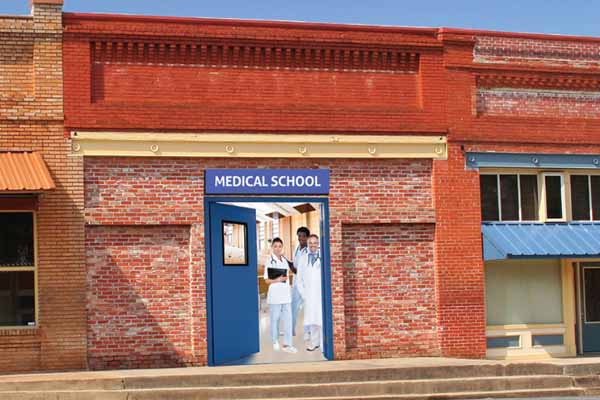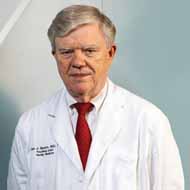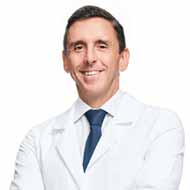
In the past decade, medical schools have been popping up across Texas, and the most recent growth has been focused in the eastern part of the state.
In 2020, the Tilman J. Fertitta Family College of Medicine at the University of Houston and the Sam Houston State University College of Osteopathic Medicine (SHSU-COM) in Conroe both opened their doors to medical students. Then in July, The University
of Texas at Tyler School of Medicine launched its first classes, making it the state’s 16th medical school. (See "Recent Additions to Medical Education in Texas.")
The growth in eastern Texas has been more of a coincidence than a grand plan by policymakers, but it reflects the fact that this part of the state has huge medical needs that have not been met. In fact, all three schools started with a stated mission
to address the region’s health care problems.
East Texas, West Texas, and the Rio Grande Valley have long been seen as having the state’s greatest health disparities as well as the greatest shortage of physicians and health care infrastructure. For example, the 35 counties in the northeast corner
of the state in the Tyler area have about 2 million people spread out in mostly rural areas where there are few health care options, says UT Tyler School of Medicine Founding Dean Brigham Willis, MD.
“If [that part of] East Texas were its own state, it would be quite large – larger than West Virginia,” he said. “But the health outcomes would be ranked between 47th and 51st in that region in almost every major category. There’s a huge amount of work
to be done to reduce the health care disparities out here.”
A medical school can only do so much to recruit new physicians to a health care desert, says Thomas Mohr, DO, dean of SHSU-COM. Once students graduate, they’re free to practice wherever they want.
But all three schools recruit students intensively for their mission: improving rural medicine, in the case of SHSU-COM and UT Tyler School of Medicine; and improving both rural and inner-city medicine in the case of the Fertitta Family College of Medicine.
The schools look for students who have lived in those areas – or have family there – because those students are the most likely to return as physicians, Dr. Mohr says.
And while it’s understood that not all graduates will choose rural or inner-city health care, the schools do everything possible to encourage that. For instance, SHSU-COM pursues a “distributive model” of medical education in which third- and fourth-year
students move to small towns to do clinical work and live there for a year or two so they understand what to expect – and hopefully put down roots.
“I have students [doing clinical work] in Nacogdoches and Lufkin who have gotten involved in everything from the churches there to running the Little League or soccer for the kids when they’re not in the hospital or clinic,” Dr. Mohr said. “And they tell
me, ‘When I finish my residency, I want to go back there.’”
Separate from the mission to overcome geographic and social obstacles to health care, school administrators have their hands full. Starting a new medical school is a “pretty complex enterprise” that takes “years of planning,” said Stephen Spann, MD, founding
dean at Fertitta Family College of Medicine. He was hired in 2015 to open the school five years later.
“First, you have to develop a business plan,” he said. “You have to get the school approved by the [Texas] Higher Education Coordinating Board and the legislature, you have to have funding in place, you have to raise philanthropy, you have to build a
curriculum, you have to recruit a faculty, you have to develop a place to teach the students … you have to get those clinical partnerships in place, you have to think about developing research programs, you have to develop clinical care programs.
In our case, we put a lot of emphasis on partnering with the community. There are a lot of balls to juggle.”
Here’s how these physician-deans keep those balls in the air as they help educate Texas’ newest physicians.
 STEPHEN SPANN, MD
STEPHEN SPANN, MD
Founding Dean, Tilman J. Fertitta
Family College of Medicine at the University of Houston
Dr. Spann was working as a family physician helping underserved people in rural North Carolina and teaching residents at Wake Forest University School of Medicine when he realized he could do more good in an academic setting.
“I decided I would have a larger scope of influence if I got into full-time medical education,” he told Texas Medicine.
He subsequently held teaching or administrative positions in Oklahoma and Texas, but there’s always been an international flavor to his work. The son of missionaries, Dr. Spann grew up in Uruguay, and he has – since becoming a physician – lived and worked
in Uruguay and the United Arab Emirates. He’s also served as a consultant to medical schools, residency programs, ministries of health, and health care delivery systems in several countries.
That diverse background made him a natural to lead the Fertitta Family College of Medicine, whose existence is predicated on expanding the field of medicine to new areas. The school’s mission is to boost the number of primary care physicians in places
where physicians are scarce and use holistic approaches to recruit them.
Fertitta Family College of Medicine – along with SHSU-COM – got off to the roughest start imaginable by opening its doors in July 2020 just as the COVID-19 pandemic hit its stride. (See "A Class By Themselves,” February 2021 Texas Medicine.")
“You have a brand-new medical school – first class, no upperclassmen … and you’re doing most of that online,” Dr. Spann said. “Just trying to build traditions, trying to build esprit de corps – it was a major challenge.”
But it thrived anyway and has made headway in its goal to change the face of medicine. About 99% of the school’s 180 students are from Texas, 57% are members of an underrepresented minority group, 47% are first-generation college students, 38% are from
urban inner-city backgrounds, and 21% are from rural backgrounds.
Unlike the other two most-recent schools, Fertitta Family College of Medicine opened in a part of Texas with three other medical schools close by – Baylor College of Medicine in Houston, McGovern Medical School at UTHealth in Houston, and The University
of Texas Medical Branch John Sealy School of Medicine in Galveston. And while those schools do a great deal to provide health care to underserved populations in the region, just about every aspect of the new school – including curriculum and student
recruitment – is geared toward that end.
“We attract students who care about those [underserved] populations and want to make a difference and find better ways to care for them,” Dr. Spann said.
The school uses partnerships with Houston-area health care institutions, especially HCA Houston Healthcare, to provide both medical school training and post-graduation residencies. With HCA, the school plans to create more than 142 first-year residency
positions, more than enough to meet the Texas Higher Education Coordinating Board’s target of 1.1 entry-level residency slots per graduate from the school.
That’s critical to turning Texas-educated medical students into Texas physicians after the school graduates its first class next spring, he says.
“We know that if students do medical school and residency in Texas, there’s an 80% chance that they’ll practice here.”
Fertitta Family College of Medicine faces two big milestones in the spring: It graduates its inaugural class of 30 and faces the final of three rounds of accreditation by the Liaison Committee on Medical Education, which accredits allopathic medical schools,
and other accrediting bodies. Problems can arise naturally, as the experience with COVID-19 shows, Dr. Spann says. But he’s confident the school is already an important part of Texas’ medical education framework.
“We’re making good progress, and we’re proud of where we are.”
 THOMAS MOHR, DO
THOMAS MOHR, DO
Dean, Sam Houston State University College of Osteopathic Medicine
As a college student, Dr. Mohr originally planned to have an “MD” after his name, but his first interview with an allopathic medical school sent him looking for options. Officials there seemed only interested in his grades and research – not in him as
a person.
“It seemed like if they were going to treat me like that then that’s how they were going to teach me how to treat my patients,” he said.
He got advice to check out osteopathic medicine and felt he’d found his calling.
“I interviewed at a couple of the [osteopathic] schools and was blown away from the time I walked in at [them saying] our priority here is good interpersonal skills and a bent toward primary care – a person-first, patient-centric form of medicine,” said
Dr. Mohr, who specializes in internal medicine.
Since then, many medical schools – both osteopathic and allopathic – have adopted a more personable approach to handling students, and he says SHSU-COM establishes that priority from its first interactions with potential students.
“In many cases, we don’t even talk to our applicants about their grades,” said Dr. Mohr, who has served in academic leadership positions in Colorado and Idaho, and at the University of the Incarnate Word College of Osteopathic Medicine (UIWSOM) in San
Antonio. “Once [students] get to our interview process, we talk to them about who they are and whether they’re a good fit for what we want to do.”
That people-oriented approach is vital for the school’s mission of identifying and training primary care physicians who will work in underserved rural areas, he says, in alliance with osteopathy’s philosophy of treating a person, not the person’s illness
or injury. According to the American Medical Association, about 57% of osteopathic medical graduates go into primary care – compared with 28% of allopathic graduates – and
the school is looking to match or exceed that rate.
SHSU-COM just got a huge boost in that effort from Texas lawmakers, Dr. Mohr says. While the school was in its development phase, state lawmakers declared repeatedly that they would not provide state formula funding for it because they did not intend
to pay for any more public medical schools. But since then, the Fertitta Family College of Medicine received formula funding. In the 2023 legislative session, lawmakers granted SHSU-COM formula funding as well – about $15 million per year in 2024
and 2025.
“We were thrilled to have the governor sign the bill,” Dr. Mohr said.
The funding will mostly affect student tuition. Despite being a public school, SHSU-COM students faced tuition and fees of $55,000 per year – similar to the $59,000 paid by students at UIWSOM, Texas’ only private osteopathic medical school. With formula
funding, their tuition drops to about $26,500 per year, similar to that paid at the other public medical schools in Texas.
Even with the previously high tuition, SHSU-COM received about 3,700 applicants for its 160 spots each year, Dr. Mohr says. Now the school – along with the University of North Texas Health Science Center Texas College of Osteopathic Medicine in Fort Worth
– is one of the least-expensive osteopathic medical schools in the country. That should boost student interest and help attract those who fit the school’s mission.
Like the Fertitta Family College of Medicine, SHSU-COM has several “firsts” to check off in the near future. The school graduates its first class – of 69 – in the spring and must finalize accreditation with the Commission on Osteopathic Accreditation
and other accrediting bodies. The school is working to create several rural residency programs and just recently opened its first – a collaboration with Huntsville Memorial Hospital’s Rural Health Care Clinic,
a federally designated rural health center.
The residency program, which will eventually train 12 physicians each year, is designed to find medical students with a rural background who want to make a career of rural medicine, Dr. Mohr says.
“Our hope at the end of the day is to bring Texans from these [rural] areas back for training and practice,” he said.
 BRIGHAM WILLIS, MD
BRIGHAM WILLIS, MD
Founding Dean, The University of Texas at Tyler School of Medicine
Early in his education, Dr. Willis couldn’t decide if he wanted to become a physician or an educator – so he became both. After starting his medical career as a pediatrician, he’s held faculty and administrative positions at medical schools in California
and Arizona as well as at UT Southwestern Medical School in Dallas. In 2021, he was tasked to launch UT Tyler School of Medicine.
“Becoming dean of a new school is kind of the culmination of a career of educational involvement and oversight,” he said.
As the latest medical school to open in Texas, people might naturally assume UT Tyler School of Medicine has the farthest to go to put down roots, build infrastructure, and gain community support.
Just the opposite is true. The school got a running start because it’s been built on the foundation of The University of Texas Health Science Center at Tyler, which was established in 1977. The center recently merged with UT Tyler, which already had schools
of nursing, pharmacy, and health professions.
Given that, the medical school starts with existing research platforms, interprofessional partners, clinical programs, 15 active graduate medical education programs, and – though it is building new facilities that will be ready in two years – plenty of
places to hold classes.
On top of that, it received an $80 million gift from the East Texas Medical Center Foundation, the largest single contribution made to establish a medical school in Texas.
“That enabled very rapid approval by the legislature and the [Texas Higher Education] Coordinating Board because we had start-up funds in the bag,” Dr. Willis said.
Like SHSU-COM, UT Tyler School of Medicine is laser-focused on improving primary health care in rural areas. Thirty-two of the 40 students in its inaugural class were born and raised in East Texas, and the other eight have deep connections to the region.
The school’s curriculum and faculty efforts are geared toward getting those students back out in communities to learn what it’s like to become rural physicians.
Most new medical schools, including UT Tyler School of Medicine, have gotten rid of the traditional “Flexnerian” model for medical schools: two years of basic science followed by two years of clinical work. Instead, students are sent out on day one to
work as emergency medical technicians and in health centers to learn about community needs firsthand, Dr. Willis says.
“Through med school and their residencies, we’re trying to get them to become health care community leaders who won’t just go and hang a shingle and see their patients but become agents of change in the community,” he said.
Abandoning the Flexnerian model means that classes no longer rely on lectures but instead use interactive lessons in which students participate and solve problems, Dr. Willis says.
“We only hired [faculty members] who are on board with that type of teaching.”
Philanthropists have stepped up to pay the tuition and fees for the first two classes that graduate from UT Tyler School of Medicine, Dr. Willis says. But even with all its advantages, the school has a tough job ahead in bringing more physicians to the
rural parts of East Texas.
“It’s going to take a concerted, long-term effort to address these things.”
